September 23, 2019
Harvest of the third and final crop of 2018/19 is underway.

In its September crop report, CONAB (Brazil’s National Supply Company) reports that the harvest of Brazil’s second dry bean crop concluded and estimates production at 1.3 million MT, a 6.3% increase over last year’s second crop. The breakdown by class is as follows: 652,000 MT for carioca beans (+37%); 228,700 MT of black beans (+27%) and 412,100 MT of brown-eyed peas (-26%). The following average yields were reported: 1,474 kg/ha. for carioca beans; 1,491 kg/ha. for black beans; and 506 kg/ha. for brown-eyed peas.
Planting of the third crop concluded in mid-July and harvest is presently underway. Production is projected at 743,800 MT, a 21% increase over last year’s third crop. The breakdown by class is 672,300 MT of carioca beans (+21%), 11,700 MT of black beans (+1%) and 60,000 MT of brown-eyed peas (+29%). Yields are forecast at 1,349 kg/ha. for carioca beans, 684 kg/ha. for black beans and 677 kg/ha. for brown-eyed peas. Harvest should conclude by late October.
The production of the second and third crops is expected to offset weather-related crop losses form the first crop, which produced 986,000 MT of beans with the following breakdown by class: 563,400 MT of carioca beans; 256,900 MT of black beans; and 165,600 MT of brown-eyed peas.
Thus, Brazil’s total estimated dry bean production for 2018/19 is 3,022,800 MT, a 3% decrease from last cycle’s 3,116,100 MT. The decrease is due to a 19% reduction in brown-eyed pea production. Both carioca and black bean production are expected to be up 3 and 2% respectively.
CONAB forecasts Brazil’s total dry bean supply for 2018/19 at 3.4 million MT. Dry bean consumption is estimated at 3,050,000 MT. Imports are estimated at 120,000 MT. Black beans comprise most of Brazil’s dry bean imports. Argentina is its primary supplier.
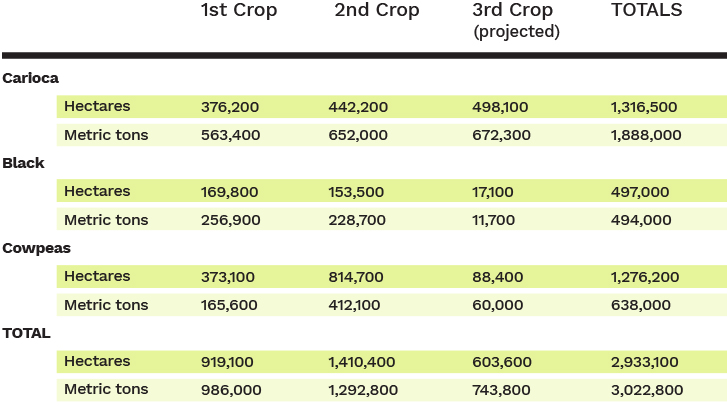

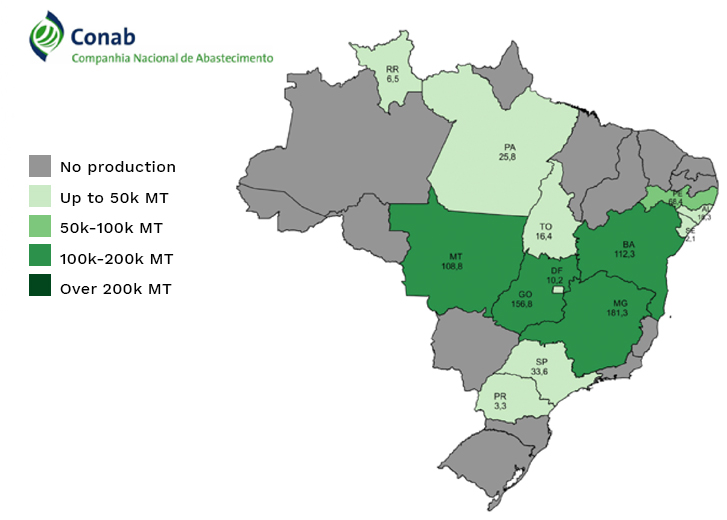
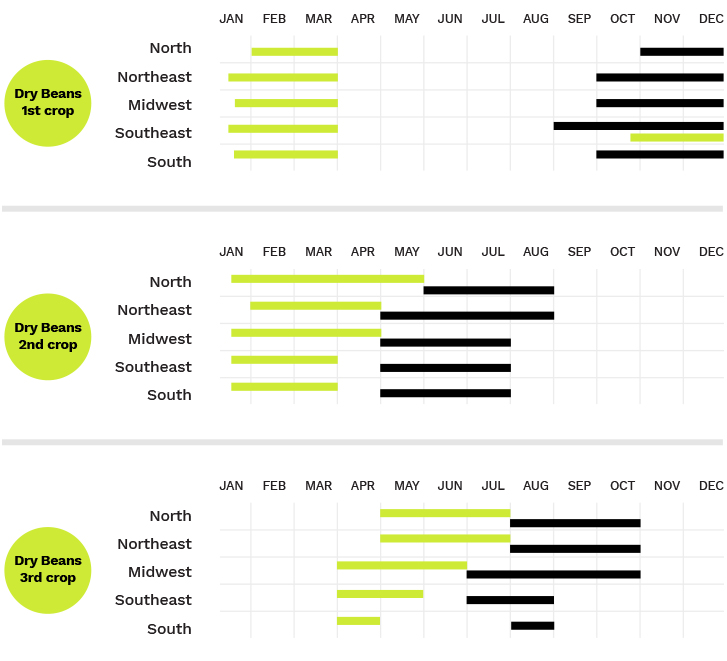
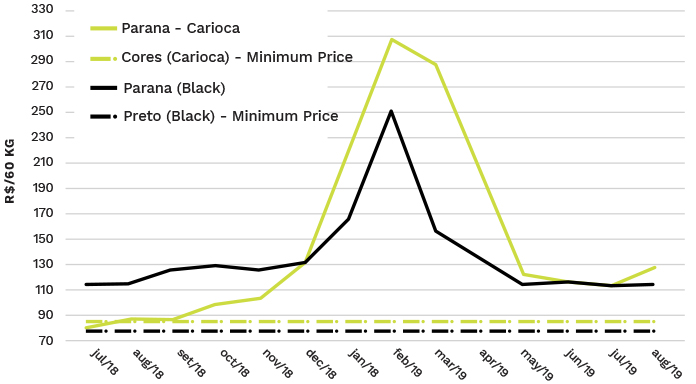
Source: CONAB weekly price report, Sept. 9 - 13, 2019 ( https://www.conab.gov.br/info-agro/analises-do-mercado-agropecuario-e-extrativista/analises-do-mercado/historico-de-conjunturas-de-feijao )
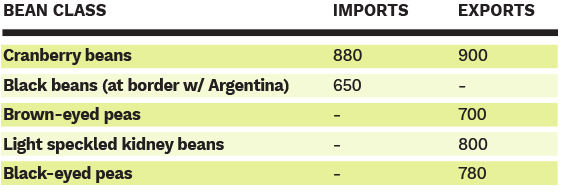

Brazil / carioca beans / black beans / Parana State / black-eyed peas / brown-eyed peas / light speckled kidney beans / cranberry beans
Disclaimer: The opinions or views expressed in this publication are those of the authors or quoted persons. They do not purport to reflect the opinions or views of the Global Pulse Confederation or its members.